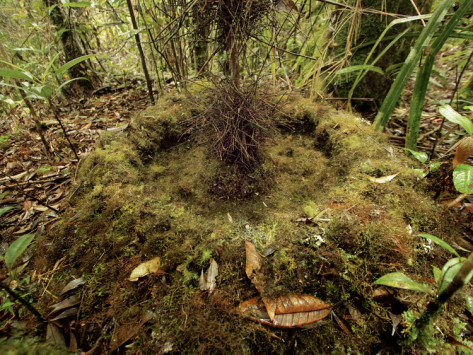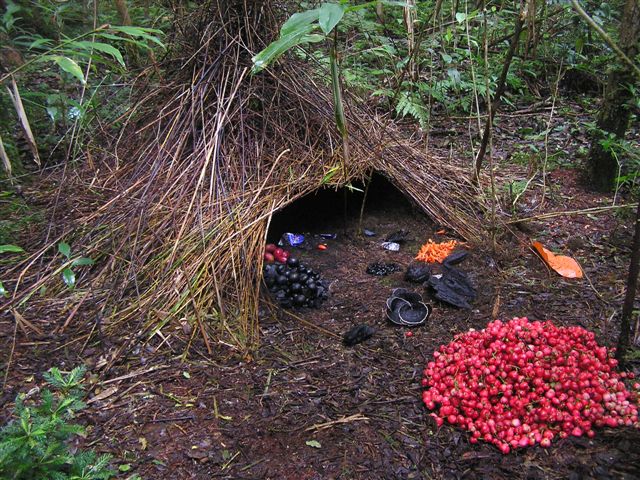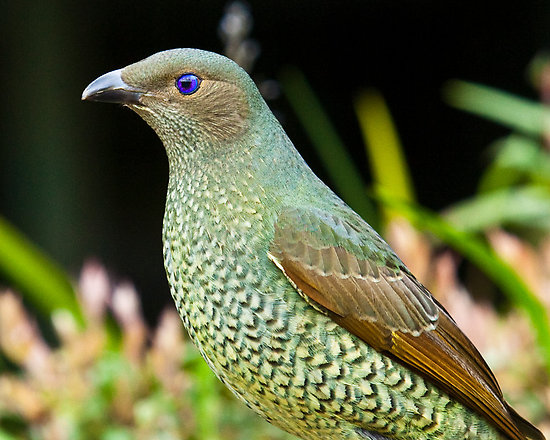
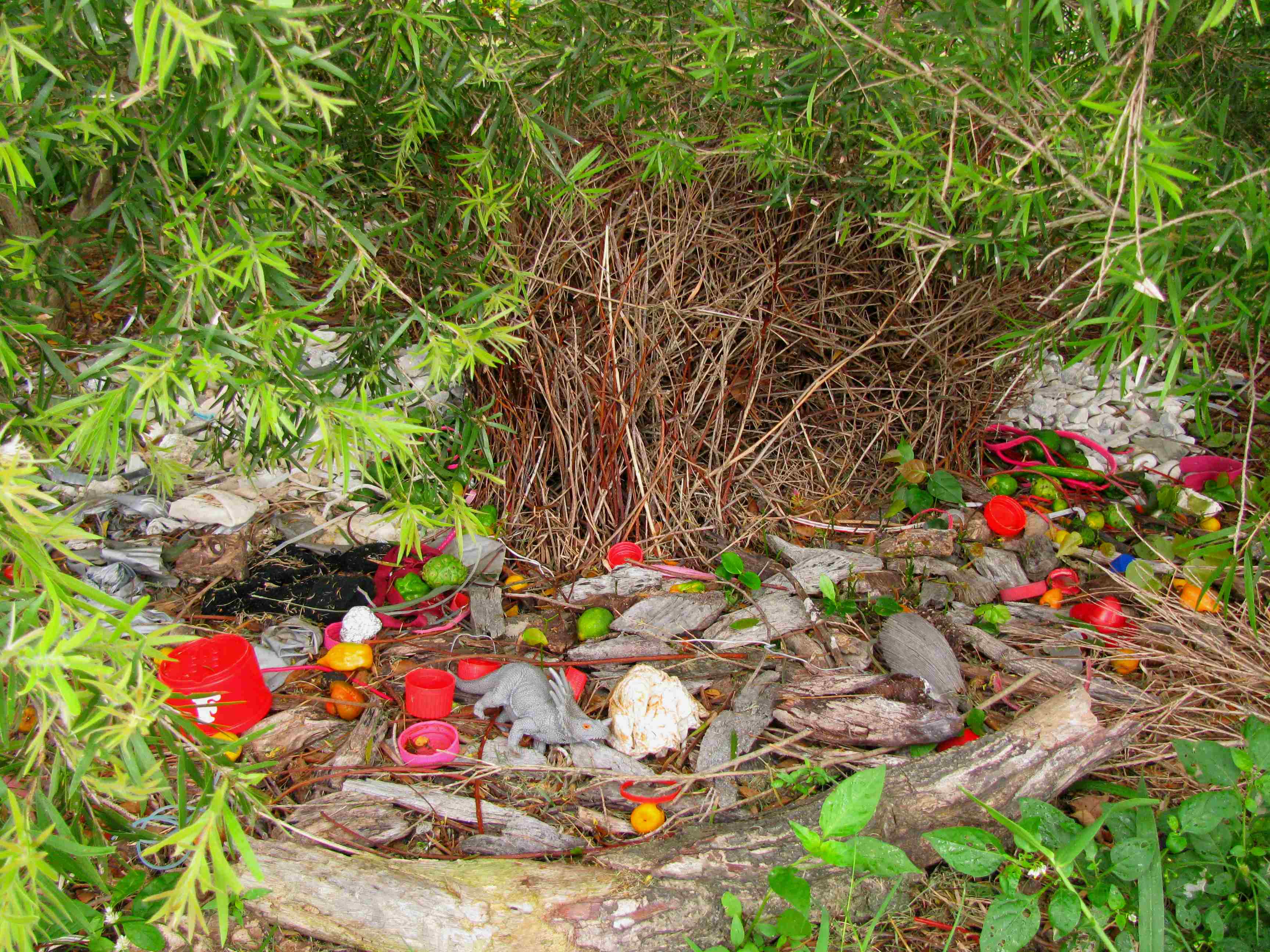
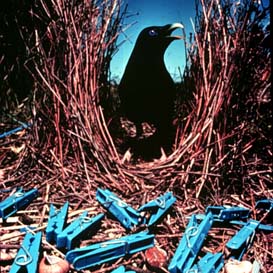

Bower Birds
"Our Feathered Friends.
Sense of Beauty in Birds"
"The more we study the works of God, the more we become convinced that He has made nothing without a purpose. "He hath made everything beautiful in its time" (Eccl. 3:11), and it is evident that all beauty is not solely for man's pleasure, but that birds, at least, have as keen an eye for beauty as man has. The nearer we come to God, and the better acquainted we become with Him, the more we realize the fact that, as the offspring of God, we have kinship with all creation. Then we shall no longer look upon the creatures less highly endowed than we, as formed to be servants to man, or to be served up in, in dainty dishes to tickle his palate, but as companions, and even as teachers.
See Job 12:2-10.
God has given them the same sensibilities and the same emotions that He has to us, only in smaller degree, and, considering their limitations, they often reveal His working in a more marked manner than men do. Among the creatures that rival human beings in the love of adornment, are the Bower Birds of Australia, so called because their nests are veritable arbours, as seen in the out on this page. The following description is from Chambers's Journal:-
At the courting season, beautiful and curious objects are collected together in these bowers, which are often elaborate structures, and built upon the ground, the nests being in trees. The whole account reads somewhat like a description of the crockery, bead, and tinsel houses which rustic children spread out for themselves on a dry grassy knoll on a pleasant summer day.
One of these Bower Birds takes most readily to the arranging and re-arranging of brightly coloured feathers, bleached bones, and shells. Another likes to carry round atones, even from a great distance, and assort them with shells. A third species makes use of blackberries, fresh leaves, and pink buds.
At the courting season the males dance through their glittering halls, exhibiting the most grotesque antics. In an aviary in New South Wales the male would sometimes chase the female, picking up a gay feather or large leaf, and uttering a low whistling note.
The Great Bower Bird has been seen amusing itself flying backwards and forwards, taking a shell alternately from each side, and carrying it through the archway in its bill. The bower of the fawn-breasted species is raised on a platform of sticks, and is nearly four feet in length. The quantity of gay objects in all cases surprises the observer.
Since the habits of the Australian Bower Birds have been narrated, Dr. Beccari, an Italian traveler, has described a new one, which he found in New Guinea, called the Gardener Bower Bird. This bird chooses a flat surface beside a small tree, round the trunk of which it builds a conical hut nearly three feet in diameter at the base. The hut is formed of the twigs of a parasitical hanging orchid, whose leaves, keeping fresh for a long time, add to the beauty of the bower.
Within the hut, a quantity of moss is arranged round the trunk of the tree. There is a meadow of moss, weeded of grass and stones, and kept scrupulously clean, before the cottage door. Gay flowers, glossy fruit, fungi as well as bright insects, captured and killed, are placed on this green turf so as to form a pretty garden. Hence the bird's name of 'gardener,' which is also its native name. When the objects fade, they are removed out of sight, and fresh ones supplied.”
June 13, 1901 EJW, PTUK 380



